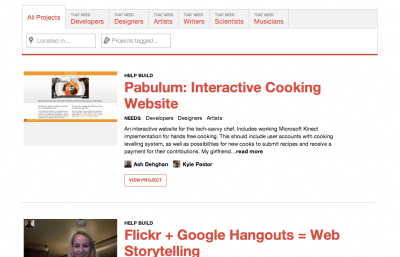Carol Burnett is honored with the Mark Twain Prize at the Kennedy Center on Sunday, Oct. 20, 2013 in Washington, D.C. (Photo by Owen Sweeney/Invision/AP)
Carol Burnett is honored with the Mark Twain Prize at the Kennedy Center on Sunday, Oct. 20, 2013 in Washington, D.C. (Photo by Owen Sweeney/Invision/AP)
Carol Burnett arrives at 16th Annual Mark Twain Prize presented to Carol Burnett at the Kennedy Center on Sunday, Oct. 20, 2013 in Washington, D.C. (Photo by Owen Sweeney/Invision/AP)
Tina Fey arrives at 16th Annual Mark Twain Prize presented to Carol Burnett at the Kennedy Center on Sunday, Oct. 20, 2013 in Washington, D.C. (Photo by Owen Sweeney/Invision/AP)
Martin Short arrives at 16th Annual Mark Twain Prize presented to Carol Burnett at the Kennedy Center on Sunday, Oct. 20, 2013 in Washington, D.C. (Photo by Owen Sweeney/Invision/AP)
Tony Bennett with wife Susan Crow arrive at 16th Annual Mark Twain Prize presented to Carol Burnett at the Kennedy Center on Sunday, Oct. 20, 2013 in Washington, D.C. (Photo by Owen Sweeney/Invision/AP)
WASHINGTON (AP) — When Carol Burnett launched her namesake variety show in the 1960s, one TV executive told her the genre was "a man's game." She proved him wrong with an 11-year run that averaged 30 million viewers each week.
On Sunday, the trailblazing comedienne received the nation's top humor prize at the Kennedy Center for the Performing Arts. Top entertainers including Julie Andrews, Tony Bennett, Tina Fey, Amy Poehler and others performed in Burnett's honor as she received the Mark Twain Prize for American Humor.
The show was taped Sunday and will be broadcast Nov. 24 on PBS stations.
"This is very encouraging," Burnett, 80, deadpanned in accepting the prize. "I mean it was a long time in coming, but I understand because there are so many people funnier than I am, especially here in Washington.
"With any luck, they'll soon get voted out, and I'll still have the Mark Twain prize."
Fey opened the show with some jokes about the recent government shutdown and about fears over "Obamacare."
"Enough politics. We are here tonight to celebrate the first lady of American comedy, Ted Cruz," Fey said, referring to the Texas senator who took a prominent role during the shutdown.
Fey quickly turned to showering Burnett with accolades for opening doors for other women comedians.
"You mean so much to me," Fey said. "I love you in a way that is just shy of creepy."
In an interview, Burnett said she was drawn to comedy after realizing how it felt to make people laugh. She went to UCLA with plans to become a journalist, but she took an acting course that put her on stage.
"I played a hillbilly woman, and coming from Texas ... it was real easy for me," she said. "I just made my entrance, and I said, 'I'm Baaack.' Then they exploded."
"I thought whoa! This feels good," Burnett said. "I wanted those laughs to keep on coming forever."
Few women were doing comedy when Burnett set her sights on New York. She caught a break when she was spotted by talent bookers from TV's "The Ed Sullivan Show" and was invited to perform her rendition of "I Made a Fool of Myself over John Foster Dulles."
Almost immediately, Burnett transformed Dulles, the former secretary of state, "from a Presbyterian bureaucrat into a smoking hot sex symbol," said Cappy McGarr, the co-creator of the Mark Twain Prize. "She sang that she was 'simply on fire with desire' and that was really her big break."
Soon after, Burnett landed a role in Broadway's "Once Upon a Mattress," and began appearing on morning TV's "The Garry Moore Show." She never thought she could host her own show, though.
"I was more of a second banana," she said. But she loved playing a variety of characters.
CBS signed her to a 10-year contract doing guest shots on sitcoms and performing in one TV special a year, but the deal also allowed her the option of creating her own variety show and guaranteed her airtime. But five years in, CBS executives had forgotten about the idea.
She recalled one executive telling her: "You know, variety is a man's game."
"At that time, I understood what he was saying, and I was never one to get angry," Burnett said. "I said 'well this is what I know, and this is what I want to do.'"
The show ran from 1967 to 1978 and included guest stars such as Lucille Ball, Jimmy Stewart, Ronald Reagan and Betty White.
Tim Conway, one of Burnett's co-stars on her show, joked that he now spends his time traveling around the country for Burnett to receive awards.
"Thank you for being such a friend," he said, "such a generous person, not with salary, but generous."
Comedian Martin Short also joined the tribute to Burnett.
"What is it about redheads on television that make us laugh so much? Carol, Lucille Ball, Donald Trump," he said.
Burnett said it's a thrill to receive the award named for humorist and satirist Mark Twain and that she's in good company with past honorees, who include Fey, Bill Cosby, Steve Martin, Lily Tomlin and Ellen DeGeneres.
Coming on the heels of the government shutdown, McGarr said it's nice to bring an "intentionally funny moment" to Washington after weeks of political drama.
"You know, serious times call for seriously funny people," McGarr said.
Burnett made a special request that rising comedienne Rosemary Watson, who does impressions of Hillary Clinton and others, be part of the show. Burnett found Watson on YouTube after receiving a fan letter and thought she was funny.
"The thing is, you pay it forward," Burnett said, "because when I got started, somebody gave me a break when I was 21 years old, and I wanted to go to New York."
Before the show, Watson said that watching Burnett shaped her life as a child. She said Burnett was not a joke teller but created funny characters.
"I do what I do because of her," Watson said. "For me, she was it. She was the female comedian I wanted to be most like."
Vicki Lawrence, a co-star with Burnett on "The Carol Burnett Show," who is perhaps best known for playing "Mama" in sketches with Burnett, said she was planning to be a dental hygienist before she knew Burnett.
"I was going to be cleaning teeth somewhere," she said, "and I guess she changed that."
___
Follow Brett Zongker on Twitter at https://twitter.com/DCArtBeat .
Associated PressSource:
http://hosted2.ap.org/APDEFAULT/4e67281c3f754d0696fbfdee0f3f1469/Article_2013-10-21-Humor%20Prize-Carol%20Burnett/id-9624d72b2f7e4fb297a1fe34f2cad35dSimilar Articles:
breast cancer awareness Wrecking Ball us open tennis Iggy Azalea yemen












